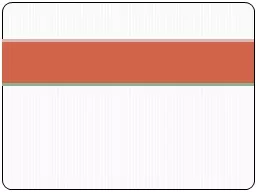PPT-Chapters 10-12 Between-Subjects, within-subjects, and factorial
Author : luanne-stotts | Published Date : 2018-03-01
Experimental Designs Conducting Experiments BetweenSubjects Design Betweensubjects design Different participants are observed one time in each group or at each
Presentation Embed Code
Download Presentation
Download Presentation The PPT/PDF document "Chapters 10-12 Between-Subjects, within..." is the property of its rightful owner. Permission is granted to download and print the materials on this website for personal, non-commercial use only, and to display it on your personal computer provided you do not modify the materials and that you retain all copyright notices contained in the materials. By downloading content from our website, you accept the terms of this agreement.
Chapters 10-12 Between-Subjects, within-subjects, and factorial: Transcript
Download Rules Of Document
"Chapters 10-12 Between-Subjects, within-subjects, and factorial"The content belongs to its owner. You may download and print it for personal use, without modification, and keep all copyright notices. By downloading, you agree to these terms.
Related Documents














